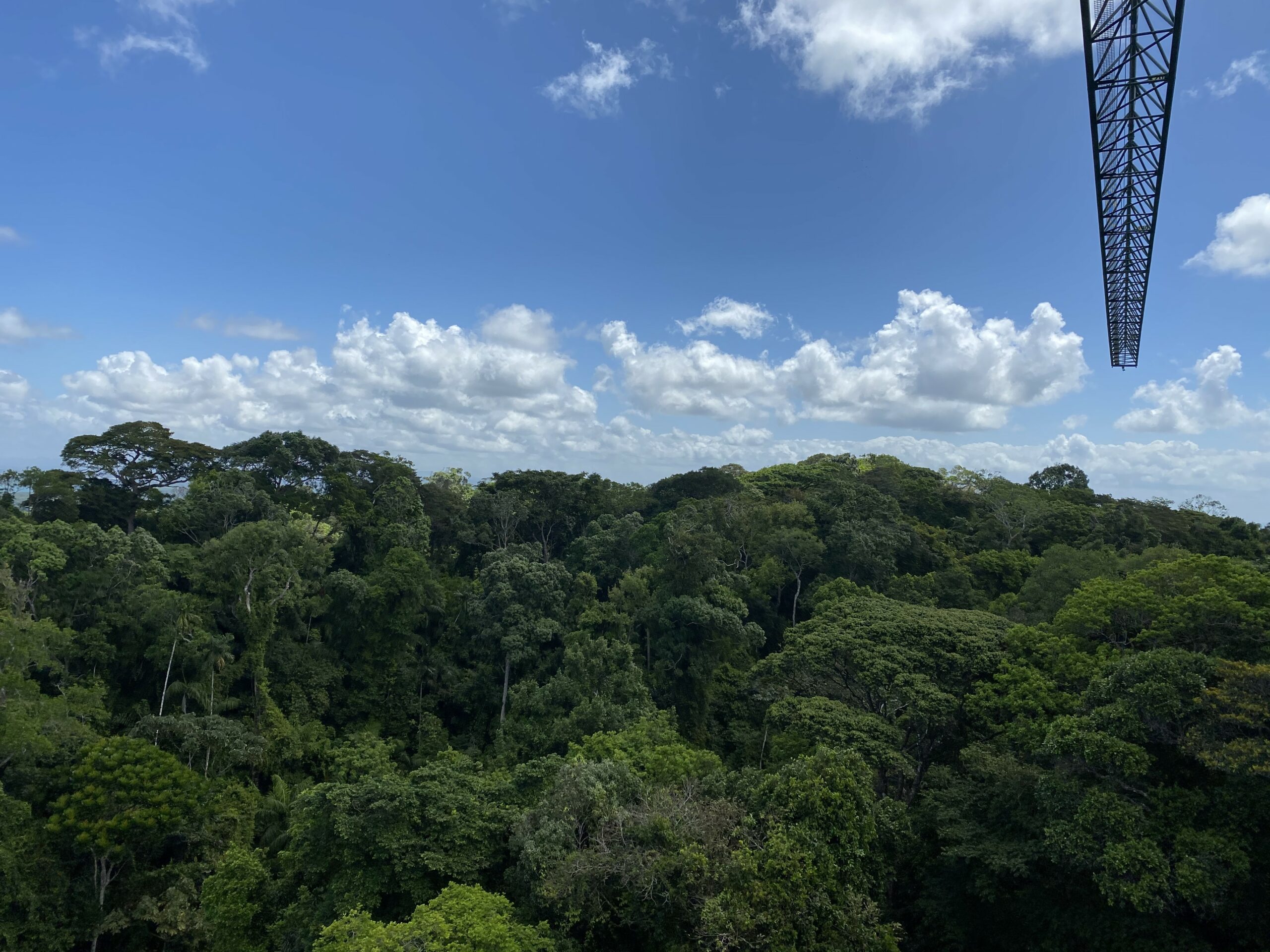June 13, 2021
Identifying Traits that Control Tropical Tree Species’ Moisture Needs
An analysis of Panamanian forests found two sets of correlating hydraulics traits in tropical trees

Plant water status traits, including resistance to leaf wilting and resistance to loss of stored stem water, play important roles in mortality rates.
[Courtesy Pacific Northwest National Laboratory.]
The Science
Drought impacts tropical forests across the globe, but scientists do not fully understand what controls tree responses to drought. Researchers measured hydraulic traits for 27 tree species across a rainfall gradient in Panama and leveraged historical forest censuses to examine how these traits varied across sites. From this data, the researchers determined which traits explained moisture requirements and mortality, finding that hydraulic traits sorted into two main groups. The first group included traits associated with plant water status, and the second group included mainly leaf associated traits. The researchers found that safety from leaf wilting plays an important role in tree mortality, while the ratio of leaf area to sapwood area informs tree moisture needs.
The Impact
These findings identify key traits that influence tree responses to drought and contribute to an enhanced understanding of how tropical forests respond to drier climates. In addition, these data can be used to parameterize and validate models to predict the future of tropical forests under climate change, which has implications for understanding biodiversity, community dynamics, and biogeochemical cycles.
Summary
Intensified droughts are affecting tropical forests across the globe. However, the underlying mechanisms of tree drought response and mortality are poorly understood. Hydraulic traits and hydraulic safety margins—the extent to which plants buffer themselves from water stress thresholds—provide insights into species-specific drought vulnerability. This study investigated the degree that tree hydraulic traits varied across the Isthmus of Panama rainfall gradient and the relationships between hydraulic traits and species-specific optimal moisture and mortality rates. Researchers found strong coordination among traits, with a network analysis revealing two major groups of correlated traits. One group included plant water status, leaf wilting point, stem water storage, stem density, hydraulic safety margins, and mortality rate. The second group has leaf mass per area, leaf dry matter content, hydraulic architecture (leaf area to sapwood area ratio), and species-specific optimal moisture. These results demonstrated that while species with greater safety from turgor loss had lower mortality rates, only hydraulic architecture explained species’ moisture dependency. Species with a greater leaf area to sapwood area ratio were associated with drier sites and reduced their dry season transpirational demand via deciduousness.
Principal Investigator
Nate McDowell
Pacific Northwest National Laboratory
[email protected]
Program Manager
Brian Benscoter
U.S. Department of Energy, Biological and Environmental Research (SC-33)
Environmental System Science
[email protected]
Funding
This work was supported by the Next Generation Ecosystem Experiments – Tropics project, which is funded by the Office of Biological and Environmental Research (BER), within the U.S. Department of Energy’s (DOE) Office of Science.
References
Pivovaroff, A.L., et al. "Hydraulic Architecture Explains Species Moisture Dependency but not Mortality Rates across a Tropical Rainfall Gradient." Biotropica 53 (4), 1213–1225 (2021). https://doi.org/DOI: 10.1111/btp.12964.

